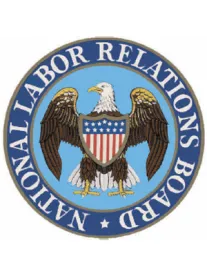The first day of employment is often chaotic. New employees must learn their way around the jobsite, meet (and remember the names of) many new people and otherwise familiarize themselves with working at a new job. Oh, and there’s the paperwork. Seemingly endless mounds of paperwork. New employees are asked to sign a multitude of documents concerning all aspects of employment. Many of the documents are not something employees ever thoroughly read, like the employee handbook can have serious consequences.
One such document employees often are asked to sign is a non-compete agreement, an agreement which basically restricts the ability of the employee to work for a competitor for a certain period of time after leaving employment. These agreements also frequently prohibit the employee from sharing of knowledge learned at a prior place of employment. The law varies widely from state to state as to the enforceability of non-compete agreements.
When employees are represented by a union the employer must consider whether all this new-hire paperwork is consistent with its obligation to bargain with the union. In Minteq International, Inc., 364 NLRB No. 63 (July 29, 2016), the NLRB recently ruled that an employer’s unilateral implementation of a non-compete agreement to new hire employees violated the law because the employer owed the union a duty to bargain over the non-compete agreement.
The facts are fairly straightforward. The employer manufactures products used in the steel industry. Its employees are represented by a union. The parties entered into a collective bargaining agreement effective from 2011 to 2014. Sometime during 2013, without informing the union, the employer implemented a requirement that each new-hire sign a non-compete agreement which restricted the signer’s ability to move to a competitor for 18 months following leaving the employment of the employer. The agreement also prohibited the signer from disclosing certain confidential information about the company. The non-compete was presented to the new hires during two days of paid orientation. One bargaining unit member who had signed the non-compete agreement left employment to work for a competitor. The employer sent the former employee letters “reminding him of his obligation” under the non-compete agreement. The employee complained to his former union and charges were filed with the NLRB.
The parties’ collective bargaining agreement contained a management-rights clause giving the employer the right to “hire employees, determine their qualifications” and “issue amend and revise work rules” and “Standards and of Conduct . . .and to take whatever action is either necessary or advisable to manage and fulfill the mission of the Company. . ”
Although the bargaining allegation was before the Administrative Law Judge at trial, the judge did not address the issue. Instead, the Administrative Law Judge found certain portions of the non-compete language to be unlawfully overbroad. Both the General Counsel and the employer appealed.
The NLRB found the employer violated its duty to bargain in good faith by unilaterally implementing the non-compete agreement for new hires. The NLRB found that the non-compete agreement was a mandatory subject of bargaining because “it settles an aspect of the relationship between the [employer] and its employees. The [non-compete agreement] applies to individuals both while they are employed by the [employer] and after their employment with [the employer] has ended.”
The NLRB rejected the employer’s argument that the non-compete agreement was not a mandatory subject of bargaining because it contained no threat of discipline. The NLRB concluded that “agreeing to comply with the requirements of the [non-compete] is a term of employment, implicit in the [non-compete] is the threat of discipline or discharge for failing to comply with its provisions.” In other words, because the employee could violate the non-compete agreement while still employed (by disclosing confidential information or working for a competitor), it was likely there could be some consequences such as discipline or discharge making it sufficient to constitute a mandatory subject of bargaining.
The NLRB also found that the non-compete agreement was a mandatory subject of bargaining because it “effectively impos[es] a cost of lost economic opportunities on employees as a consequence of working for [employer].” Also, the non-compete agreement’s assignment of inventions to the employer “imposes economic opportunity costs on employees by broadly restricting their ability to benefit from their discoveries, inventions, and acquired knowledge related to working for [employer].”
The employer contended it was privileged to implement the non-compete agreement because the parties had agreed to a management-rights clause. As seems to be the new trend, the NLRB rejected this argument noting that “the management-rights clause at issue makes no reference to the non-complete/non-disclosure agreements and thus does not constitute” a clear and unmistakable waiver.
Finally, the NLRB evaluated the language of the non-compete agreement found by the Administrative Law Judge to be unlawfully overbroad. In what seems to be a first the NLRB actually reversed the judge and found certain phrases to be lawful. For example, the Administrative Law Judge found the non-compete agreement’s confidentiality policy overbroad because it prohibited the disclosure of “any other information which is identified as confidential by the Company.” The NLRB reversed this conclusion, reasoning the language was lawful because read in context it was not overbroad:
Viewed in isolation, a prohibition on releasing ‘any . . . information which is identified as confidential by the Company’ would clearly be overbroad, since it would allow the [employer] to designate any information, including information about employees’ wages, benefits, or other terms and conditions of employment- as confidential and thus restrict employees’ exercise of their Section 7 rights.
However, the phrase containing this prohibition does not stand alone and must be read in context.
The NLRB noted the policy defined “confidential information” narrowly as “any proprietary or confidential information or know-how belonging to the company” and that definition was followed by examples of confidential information illustrating the scope of the policy. This is, of course, the proper analysis set forth in the law concerning the evaluation of the lawfulness policy. What is startling is that the NLRB seems to have taken the time to look at, and analyze, the entire context of the phrase in question, something it doesn’t always do in its opinions.
Bottom line: in a unionized context, make sure that all the policies being handed out in new-hire orientation are consistent with any obligation to bargain with the union representing the employees. If the paperwork imposes conditions on employment there is a good chance it is something that must be addressed in bargaining with the union before it is implemented. Finally, as noted, employers need to be wary of relying on the language of a management-rights clause before implementing a new work rule.



 />i
/>i

